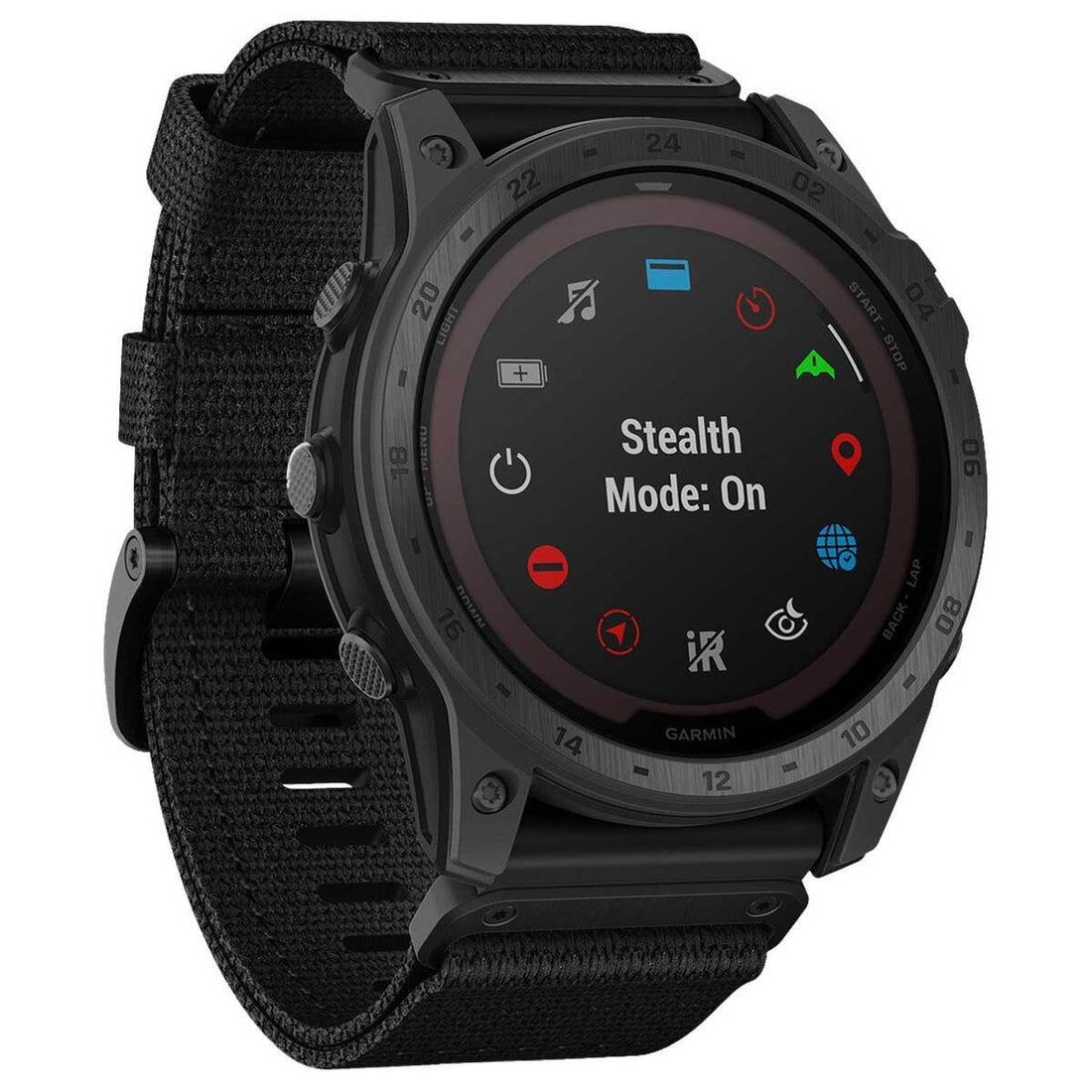
Do Special Forces Use Smartwatches?
Share
A Deep Dive into Modern Wearable Tech on the Battlefield
In the ever-evolving landscape of military operations, technology has become a powerful force multiplier. Among the many tech tools now integrated into modern warfare, smartwatches are increasingly making their way onto the wrists of elite soldiers. This includes units such as the U.S. Navy SEALs, Army Special Forces (Green Berets), Delta Force, British SAS, and others around the world. But the question remains: do Special Forces really use smartwatches in operational settings? The answer is nuanced, involving mission types, security considerations, and tactical needs.

Why Special Forces Might Use Smartwatches
1. Navigation and GPS Tracking
Perhaps the most compelling reason for a Special Forces operator to wear a smartwatch is navigation. Many modern smartwatches come with built-in GPS, GLONASS, and even Galileo support, allowing for:
* Offline mapping
* Waypoint marking
* Route backtracking
* Terrain awareness
Devices like the Garmin Tactix Delta and Suunto Traverse Alpha are especially designed with military use in mind, offering stealth modes, night vision compatibility, and tactical navigation features. These watches can help operators move with precision, even in GPS-denied environments when paired with offline maps and inertial navigation.
2. Fitness Monitoring and Training
Elite soldiers must maintain peak physical condition. Smartwatches provide:
* Heart rate tracking
* VO2 max estimates
* Sleep tracking
* Recovery monitoring
* Load management during training cycles
These metrics help optimize performance, prevent overtraining, and monitor readiness levels. Watches like the Polar Grit X Pro and Garmin Fenix 7X are particularly popular for these purposes in garrison or during pre-deployment phases.
3. Time Synchronization and Mission Timing
Coordinating missions down to the second is critical in Special Operations. Smartwatches with atomic time sync, multiple time zones, and mission timers allow for accurate coordination, whether it's synchronizing a HALO jump or executing a timed assault.
4. Communication Integration
While mainstream consumer smartwatches (like the Apple Watch or Galaxy Watch) are unlikely to be used in the field due to security concerns, specialized military-grade wearables can integrate with comms gear and tactical apps. Some advanced models offer:
* Encrypted messaging
* Integration with ATAK (Android Tactical Assault Kit)
* Sensor fusion from drones, satellites, and squad systems
Types of Smartwatches Used by Special Forces
While not all smartwatches are suited for battlefield conditions, there are a few models favored by operators and military personnel:
🔹 Garmin Tactix Delta Solar / Tactix 7
* Stealth mode (disables wireless communication and logging)
* Kill switch (data wipe)
* Jumpmaster mode for HALO/HAHO jumps
* Dual-position GPS format
* Ballistics calculator support (AB Elite app)
* Solar charging for extended field ops
🔹 Suunto Traverse Alpha
* Rugged build with knurled stainless steel bezel
* GPS/GLONASS support
* Automatic shot detection
* Night vision goggle compatibility
* Red backlight for stealth
🔹 Garmin Instinct Tactical
* Affordable and extremely durable
* Tactical features including dual-format GPS, night vision mode, stealth mode
* Supports Jumpmaster functionality
* Lightweight and simple UI
🔹 Polar Grit X Pro
* Great for fitness and recovery metrics
* Durable MIL-STD-810G certification
* Turn-by-turn navigation
* Used more for training than field missions
Security Considerations
Smartwatches, while powerful, pose significant risks in combat zones if not configured properly. Here are the key concerns:
❌ Geolocation Leaks
Smartwatches can broadcast GPS data or sync with phones, which may leak location information. In 2018, Strava's global heatmap incident showed how fitness tracking could inadvertently reveal secret military bases.
Mitigation:
* Use of stealth mode
* No sync with civilian apps
* No wireless/Bluetooth pairing during ops
* Air-gapped devices for field use
❌ EMI/Comms Interference
Watches with Bluetooth, Wi-Fi, or LTE can interfere with comms gear or be detected by electronic surveillance.
Solution:
Military-grade watches have communication disable switches or hardened firmware designed to limit emissions.
❌ Cybersecurity Threats
Consumer-grade wearables often lack hardened security, making them vulnerable to cyber intrusion.
Best Practice:
* Special Forces use hardened, closed-system smartwatches
* Some are cleared by military cybersecurity teams before deployment

When Do Special Forces Not Use Smartwatches?
Despite their benefits, smartwatches are not universally used. There are several situations where they’re avoided:
* Covert Operations – Any risk of detection through RF emissions is unacceptable.
* Electronic Warfare Environments – Enemy forces may be using signal tracking or GPS jamming.
* High-Security Missions – Missions involving sensitive sites or national-level intelligence often prohibit any smart devices.
* Underwater Operations – Dive watches or specialized instruments are preferred over digital wearables.
Training vs Combat Use
Many Special Forces operators will train with smartwatches but switch to dumb watches or tactical alternatives in actual combat. Watches like the Casio G-Shock Mudmaster or Marathon Navigator are still trusted for their:
* Durability
* Simplicity
* No electronic emissions
* Reliability in extreme conditions
However, smartwatches are increasingly being used even in field settings when properly secured.
The Future of Smartwatches in Special Forces
As battlefield networks become more integrated, wearable devices are likely to play a bigger role. The Department of Defense has invested in:
* Next-gen tactical wearables for biometric monitoring
* Augmented reality (AR) watches and headsets
* Secure battlefield apps tied to command systems
* Wearable power solutions like solar and kinetic chargers
In time, we may see watches that not only tell time and navigate but offer real-time intelligence, mission overlays, and medic alerts directly on the wrist.
Conclusion
Yes, Special Forces do use smartwatches, but not indiscriminately. When used, they are mission-configured, cybersecure, and tactically justified. Whether for land navigation, jump operations, or performance optimization, smartwatches are becoming another tool in the operator’s arsenal — provided they’re used wisely and with an understanding of the risks.
The key takeaway? Smartwatches don’t replace traditional tools, but they can greatly enhance situational awareness and efficiency when deployed intelligently.